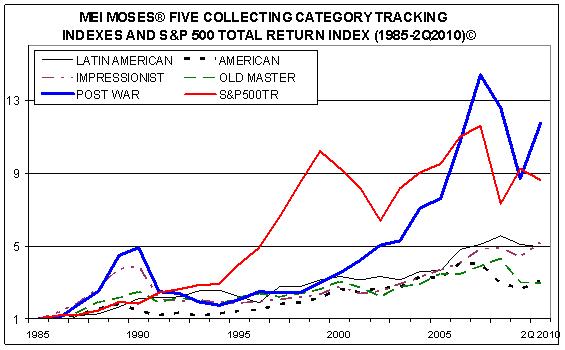Topic: Toy Museum News
nuestra propuesta de Arte + Juguetes Retro y Clasicos Argentinos
Me dirijo a Ud. a fin de formalizar el ofrecimiento del Buenos Aires Toy Museum para realizar en el Museo de Arte Contemporáneo Latinoamericano de La Plata una muestra integral de Arte contemporáneo + Juguetes Retro y clásicos Argentinos.
Nuestra propuesta consiste en un abordaje artístico de los juguetes, entendiendo que se trata de objetos culturales y de diseño de gran importancia; reflejos artísticos de su época.
En este sentido es que desarrollamos un concepto amplio en donde estos objetos lúdicos y artísticos de producción nacional se combinan con la muestra de las producciones de pintores y artistas de nuestro tiempo.
Las piezas de arte son combinadas con los juguetes y de este modo aportan una concepción artística y estética inherente a cada una de las piezas en exhibición.
El atractivo esencial de los juguetes de producción nacional durante el período mencionado es dual. Por un lado está el valor cultural ineludible que presentan para las generaciones que crecieron jugando con aquellas piezas y que las atesoran como reflejos de un momento histórico específico. Pero quizá tan importante como éste, es el aporte histórico de dichas piezas que favorecieron el posicionamiento de la industria juguetera argentina en el plano internacional. Si bien los juguetes argentinos desde los inicios de la producción industrial en nuestro país en la década del 50 se han caracterizado por su calidad y diseño, con este nuevo giro en la industria se alcanza un status mayor. Aquellas empresas de renombre en los países centrales tales como Hasbro, Mattel, Solido, etc que concibieron y produjeron estos juguetes, eligieron a la Argentina como localización perfecta para que estos juguetes norteamericanos y europeos pudieran ingresar al mercado latinoamericano con una impronta cultural propia. Es así que aquellos modelos fueron sutilmente modificados en las plantas argentinas y de allí distribuidos tanto en el país como en países vecinos de la región.
Esta nota distintiva es el resultado del conocimiento profundo que hemos desarrollado sobre nuestras piezas producto de años de investigación y colaboración con coleccionistas y empresarios nacionales de la rama. Lo que nos ha permitido reponer en su amplitud estética y artística al objeto lúdico como objeto cultural.
La exhibición consta de muebles temáticos especialmente confeccionados para este propósito los juguetes en exhibición son los siguientes:
- Autitos die cast de producción nacional por las marcas Buby, Muky y Jet
- Autos de juguete de caucho de la famosa marca Duravit
- Autos de Juguete de Roller, Gorgo, Corgi y Galgo
- Juguetes de circo de lata, madera, plástico
- Animalitos de felpa de producción nacional
- Figuras de acción de marcas internacionales cuya producción para el mercado Latinoamericano se concentró en la Argentina, como:
GI Joe
He Man
COPS
Thundercats
Transformers
-Muñecas argentinas
-Mi Pequeño Pony
-Frutillitas
- Figuritas argentinas Basuritas en todas sus series que evidencian la convergencia entre lo lúdico y lo artístico en tanto diseño y caricaturas.
Buenos Aires Toy Museum es una propuesta cultural integral con más de 10 años de trabajo, en donde se combina la recuperación histórica y cultural de juguetes hechos o encontrados en la argentina, y las producciones de jóvenes artistas argentinos y latinoamericanos de nuestro tiempo que trabajan la temática del juego y la infancia, la fantasía y la creatividad.
Con un acervo de más de 10,000 juguetes propios el Buenos Aires Toy Museum ha desarrollado su primera muestra conceptual en el BAC, British Arts Center que consiste en una muestra de algunos de juguetes y juegos, y como obras de arte del joven artista porteño Juan Francisco Adaro.
A partir de la repercusión que resulta de la exhibición del mes de Julio, que estará concluyendo el 6 de Agosto, tenemos la intención de continuar mostrando nuestros juguetes y obras de arte.
La muestra itinerante de Arte + Juguetes Retro y Clasicos Argentinos, gracias a la variedad de piezas propias con las que trabajamos nunca se repite.
Nuestra propuesta incluye muebles íntegramente diseñados para la ocasión que han sido concebidos especialmente para resaltar las cualidades intrínsecas de las piezas en exhibición, de una manera novedosa y vanguardista, en el marco de un approach temático.
Hemos desarrollado un abordaje propio para revalorizar la historia de los juguetes argentinos en términos didácticos y lúdicos al mismo tiempo que resaltamos sus cualidades estéticas, artísticas y de diseño. Justamente gracias al trabajo de investigación llevado adelante por el Buenos Aires Toy Museum, contamos con producciones propias que detallan la historia de los juguetes exhibidos revalorizando de este modo su contexto de producción al mismo tiempo que las características intrínsecas de cada una de las piezas.
Por eso nuestra propuesta de Arte + Juguetes Retro y Clasicos Argentinos atrae tanto a niños como jóvenes y adultos. Es una muestra polifacética que interesa también a los hombres y mujeres de nuestro tiempo que valoran la cultura Retro, los juguetes de antaño principalmente aquellos de las décadas del 70 y 80, donde el diseño local de vanguardia y las expresiones artísticas ligadas a la temática retro-clásica de los juegos y juguetes se expresaron tan profusamente. Dentro de este amplio espectro de público, el interés particular de artistas, curadores y coleccionistas de arte y juguetes encuentran un abordaje integral y novedoso.



